| The Slitting Method for Residual Stress Measurement: : Ceramic application |
Residual stress measured in a layered ceramic
B. Ekbote, P. Kwon, M. B. Prime, “Micromechanics-based Design and Processing of Efficient Meso-scale Heat Exchanger,” 21st Annual Technical Conference of American Society for Composites, Sept. 17-20, 2006, Dearborn , MI. preprint (pdf) (LA-UR-06-5711)
For an elegeant way to handle discontinuous stress in layers, see also:
Prime, M. B., and Crane, D. L., 2014, "Slitting Method Measurement of Residual Stress Profiles, Including Stress Discontinuities, in Layered Specimens," Residual Stress, Thermomechanics & Infrared Imaging, Hybrid Techniques and Inverse Problems, Volume 8, Conference Proceedings of the Society for Experimental Mechanics Series, M. Rossi, M. Sasso, N. Connesson, R. Singh, A. DeWald, D. Backman, and P. Gloeckner, eds., Springer International Publishing, pp. 93-102. preprint (pdf). (LA-UR-13-21481)
3-Layer Ceramic Specimen:
|
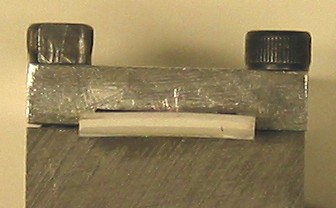 Cross-section of sample |
Cut slot using grinding wheel:
|
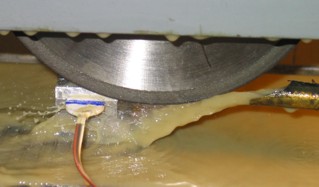 |
Strain Data First Test:
|
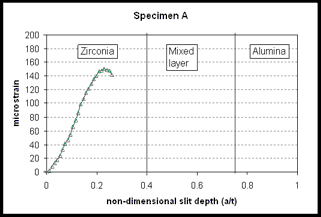 |
Strain Data Second Test :
|
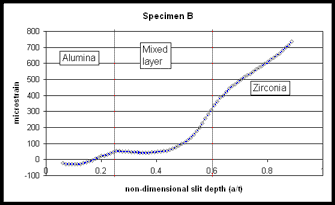 |
Finite Element Model for Coefficients :
|
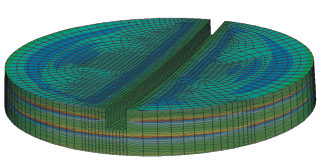 |
Stresses:
|
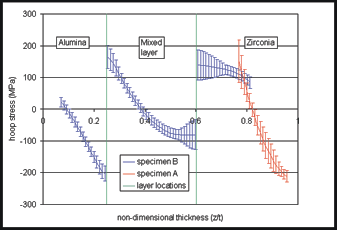
|